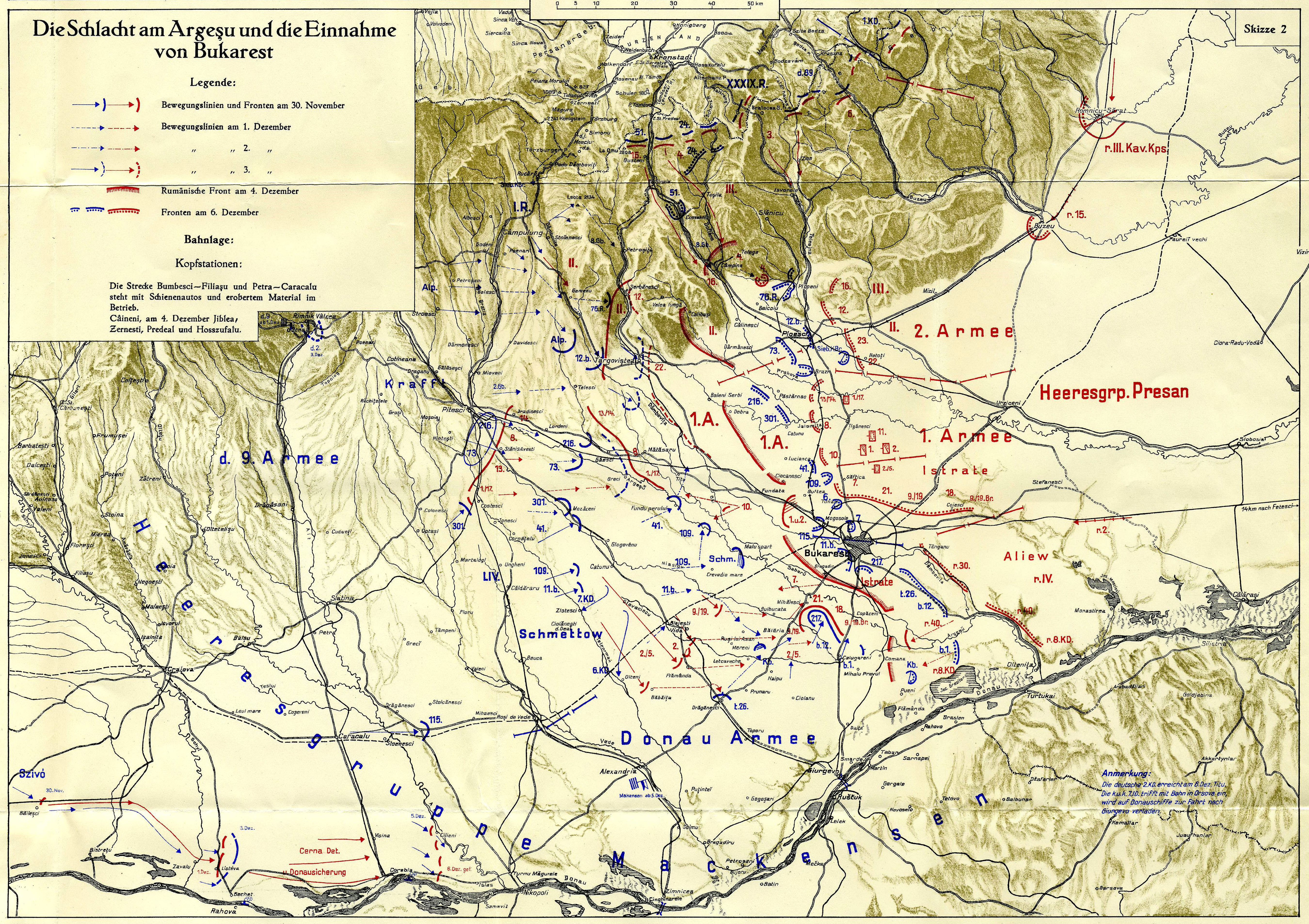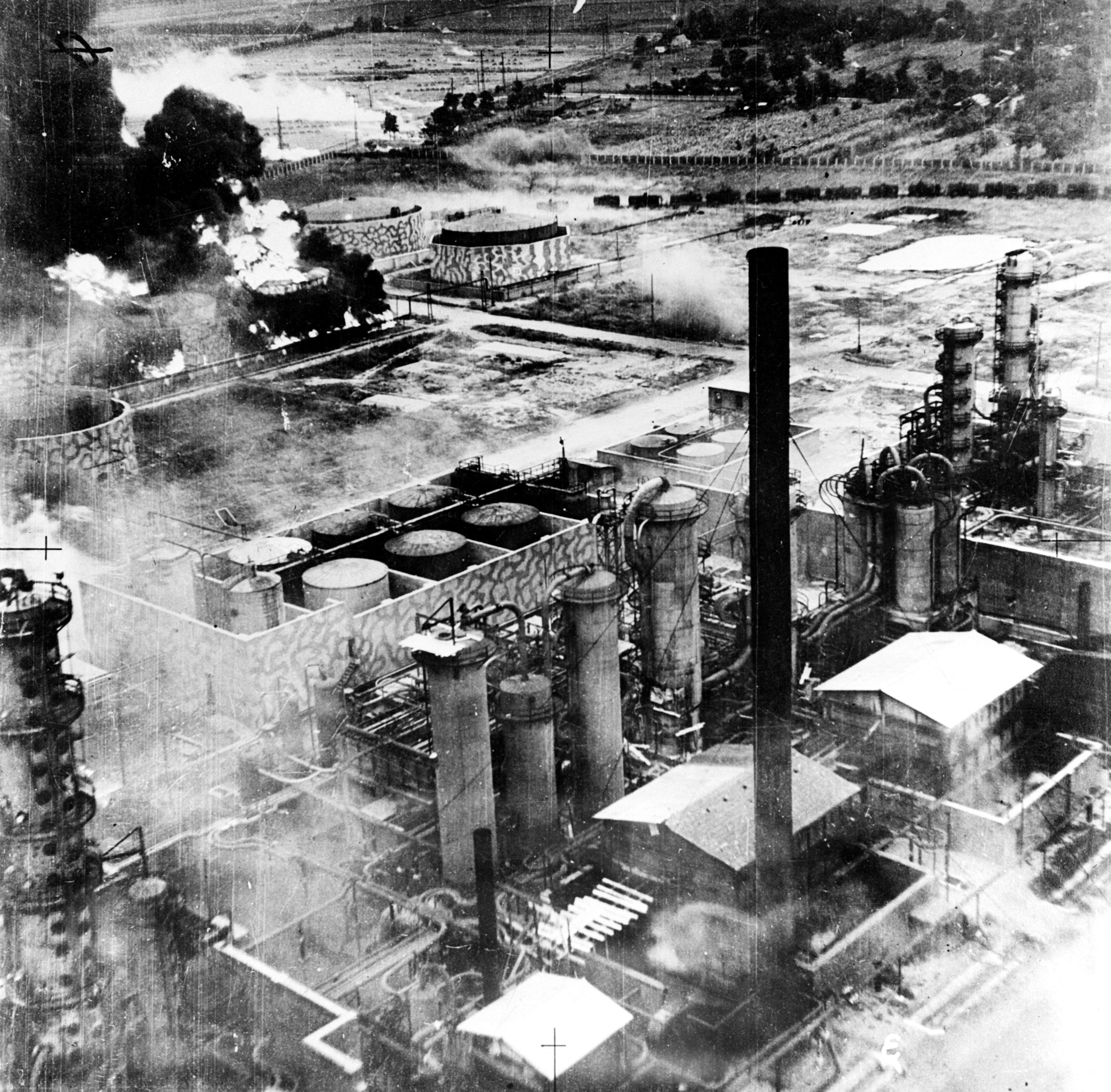|
Battle Of The Argeș
The Battle of the Argeș took place during the Romania in World War I, Romanian Campaign of World War I.on 1 December 1916. The battle was fought along the line of the Argeș (river), Argeș River in Romania between Austro-German forces of the Central Powers and Romanian forces with the Russian imperial forces. Background In late November 1916, Germano-Bulgarian forces under August von Mackensen crossed the Danube near Zimnicea under the cover of fog and began to march on Bucharest. The Romanians had transferred most of their forces to the Carpathian Mountains, Carpathians and as a result the Central Powers forces had a preponderant advantage: 18 Romanian battalions and 48 artillery pieces against 40 German and Bulgarian battalions and 188 guns.Stone 1998, p. 280. This attack threatened to cut off half the Romanian Land Forces, Romanian Army and so the decision was made to launch a counterattack. Relying upon the Russians to contain the fighting elsewhere, the plan entailed using ... [...More Info...] [...Related Items...] OR: [Wikipedia] [Google] [Baidu] |
Battle Of Bucharest
The Battle of Bucharest, also known as the '' Argeş– Neajlov Defensive Operation'' in Romania, was the last battle of the Romanian Campaign of 1916 in World War I, in which the Central Powers' combatants, led by General Erich von Falkenhayn, occupied the Romanian capital and forced the Romanian Government, as well as the remnants of the Romanian Army to retreat to Moldavia and re-establish its capital at Iaşi. The battle was of defensive nature, as the Romanian Army was joined by a part of the Imperial Russian army. The Romanian Army, led by General Constantin Prezan, had previously been unable to stop the German counterattack in Muntenia. The armed forces that made up the German counterattack were mostly German, two armed groups attacking concentrically, one from the direction of Oltenia and the other from the south of the Danube. The sheer number of troops involved, as well as the large area of operations, make it one of the most complex battles fought on Romanian soi ... [...More Info...] [...Related Items...] OR: [Wikipedia] [Google] [Baidu] |
Battalion
A battalion is a military unit, typically consisting of up to one thousand soldiers. A battalion is commanded by a lieutenant colonel and subdivided into several Company (military unit), companies, each typically commanded by a Major (rank), major or a Captain (armed forces), captain. The typical battalion is built from three operational companies, one weapons company and one headquarters company. In some countries, battalions are exclusively infantry, while in others battalions are unit-level organizations. The word ''battalion'' has its origins in the Late Latin word ''battalion'', which is derived from ''battalia'', meaning "battle" or "combat." The term was used to describe a large group of soldiers ready for battle. Over time, its meaning evolved in military terminology. The word "battalion" came into the English language in the 16th century from the French language, French , meaning "battle squadron" (similar to the Italian language, Italian meaning the same thing) and ... [...More Info...] [...Related Items...] OR: [Wikipedia] [Google] [Baidu] |
Military Operations Of World War I Involving Germany
A military, also known collectively as armed forces, is a heavily armed, highly organized force primarily intended for warfare. Militaries are typically authorized and maintained by a sovereign state, with their members identifiable by a distinct military uniform. They may consist of one or more military branches such as an army, navy, air force, space force, marines, or coast guard. The main task of a military is usually defined as defence of their state and its interests against external armed threats. In broad usage, the terms "armed forces" and "military" are often synonymous, although in technical usage a distinction is sometimes made in which a country's armed forces may include other paramilitary forces such as armed police. Beyond warfare, the military may be employed in additional sanctioned and non-sanctioned functions within the state, including internal security threats, crowd control, promotion of political agendas, emergency services and reconstruction, pro ... [...More Info...] [...Related Items...] OR: [Wikipedia] [Google] [Baidu] |
Battles Of World War I Involving Bulgaria
A battle is an occurrence of combat in warfare between opposing military units of any number or size. A war usually consists of multiple battles. In general, a battle is a military engagement that is well defined in duration, area, and force commitment. An engagement with only limited commitment between the forces and without decisive results is sometimes called a skirmish. The word "battle" can also be used infrequently to refer to an entire operational campaign, although this usage greatly diverges from its conventional or customary meaning. Generally, the word "battle" is used for such campaigns if referring to a protracted combat encounter in which either one or both of the combatants had the same methods, resources, and strategic objectives throughout the encounter. Some prominent examples of this would be the Battle of the Atlantic, Battle of Britain, and the Battle of France, all in World War II. Wars and military campaigns are guided by military strategy, whereas batt ... [...More Info...] [...Related Items...] OR: [Wikipedia] [Google] [Baidu] |
Siret River
The Siret or Sireth (, , , ) is a river that rises from the Carpathians in the Northern Bukovina region of Ukraine, and flows southward into Romania before it joins the Danube. It is long,Planul de management al spațiului hidrografic Siret Administrația Națională Apele Române of which a section is in Romania, and its basin area is , of which in Romania. Its average discharge is . In ancient times, it was named ''Hierasus'' ... [...More Info...] [...Related Items...] OR: [Wikipedia] [Google] [Baidu] |
Iași
Iași ( , , ; also known by other #Etymology and names, alternative names), also referred to mostly historically as Jassy ( , ), is the Cities in Romania, third largest city in Romania and the seat of Iași County. Located in the historical region of Western Moldavia, Moldavia, it has traditionally been one of the leading centres of Romanian social, cultural, academic and artistic life. The city was the capital of the Principality of Moldavia from 1564 to 1859, then of the United Principalities from 1859 to 1862, and the capital of Kingdom of Romania, Romania from 1916 to 1918. Known as the Cultural Capital of Romania Iași is a symbol of Romanian history. Historian Nicolae Iorga stated that "there should be no Romanian who does not know of it". Still referred to as "The Moldavian Capital", Iași is the main economic and business centre of Romania's Moldavian region. In December 2018, Iași was officially declared the Historical Capital of Romania. At the 2021 Romanian censu ... [...More Info...] [...Related Items...] OR: [Wikipedia] [Google] [Baidu] |
Fortifications Of Bucharest
The fortifications of Bucharest are a ring of thirty six fortifications (18 forts and 18 batteries) built in late 19th century that surround Bucharest, the capital of Romania. A report by the War Ministry led the celebrated Belgian military architect Henri Alexis Brialmont (who made several visits to Bucharest, meeting with King Carol I in the process) to draft a plan for the city's fortifications, with construction beginning in 1884. The forts, about 4 km apart, cost 111.5 million gold lei (the equivalent of 614 mil euro of today, of which only 15 million were initially allocated), or three times the annual army budget. The forts took over two decades to build, and work was quite complex; the walls are two metres thick in places. All eighteen forts were linked by a road and a railway, which today is DN100, Bucharest's ring road. Eighteen subterranean batteries were placed between the forts, and the fortification ring included some 240 pieces of artillery in all. Romania, ... [...More Info...] [...Related Items...] OR: [Wikipedia] [Google] [Baidu] |
Ploiești
Ploiești ( , , ), formerly spelled Ploești, is a Municipiu, city and county seat in Prahova County, Romania. Part of the historical region of Muntenia, it is located north of Bucharest. The area of Ploiești is around , and it borders the Blejoi commune in the north, Bărcănești, Prahova, Bărcănești and Brazi communes in the south, Târgșoru Vechi commune in the west, and Bucov and Berceni, Prahova, Berceni communes in the east. According to the 2021 Romanian census, 2021 census, Ploiești is the List of cities and towns in Romania, tenth most populous city in the country with a population of 180,540. The city grew beginning with the 17th century on an estate bought by ruler Michael the Brave from the local landlords, gradually replacing nearby Wallachian fairs of Târgșor, Gherghița, and Bucov. Its development was accelerated by heavy industrialisation during the mid-19th century, with the world's first large-scale oil refinery, petroleum refinery being opened between ... [...More Info...] [...Related Items...] OR: [Wikipedia] [Google] [Baidu] |
First Battle Of The Marne
The First Battle of the Marne or known in France as the Miracle on the Marne () was a battle of the First World War fought from the 5th to the 12th September 1914. The German army invaded France with a plan for winning the war in 40 days by occupying Paris and destroying the French and British armies. The Germans had initial successes in August. They were victorious in the Battles of Mons and the Frontiers and overran a large area of northern France and Belgium. In what is called the Great Retreat the Germans pursued the retreating French and British forces more than southwards. The French and British halted their retreat in the Marne River valley while the Germans advanced to from Paris. With the battlefield reverses of August, Field Marshal John French, commander of the British Expeditionary Force (BEF), lost faith in the French and began to plan for a British retreat to port cities on the English Channel for an evacuation to Britain. The French commander Joseph Joffr ... [...More Info...] [...Related Items...] OR: [Wikipedia] [Google] [Baidu] |
Chief Of Staff
The title chief of staff (or head of staff) identifies the leader of a complex organization such as the armed forces, institution, or body of persons and it also may identify a principal staff officer (PSO), who is the coordinator of the supporting Employment, staff or a primary aide-de-camp to an important individual, such as a President (government title), president, or a senior military officer, or leader of a large organization. In general, a chief of staff provides a buffer between a chief executive and that executive's direct-reporting team. The chief of staff generally works behind the scenes to solve problems, mediate disputes, and deal with issues before they are brought to the chief executive. Often chiefs of staff act as a confidant and advisor to the chief executive, acting as a sounding board for ideas. Ultimately the actual duties depend on the position and the people involved. Civilian Government Australia *Chief of Staff to the Prime Minister (Australia), Chief ... [...More Info...] [...Related Items...] OR: [Wikipedia] [Google] [Baidu] |




